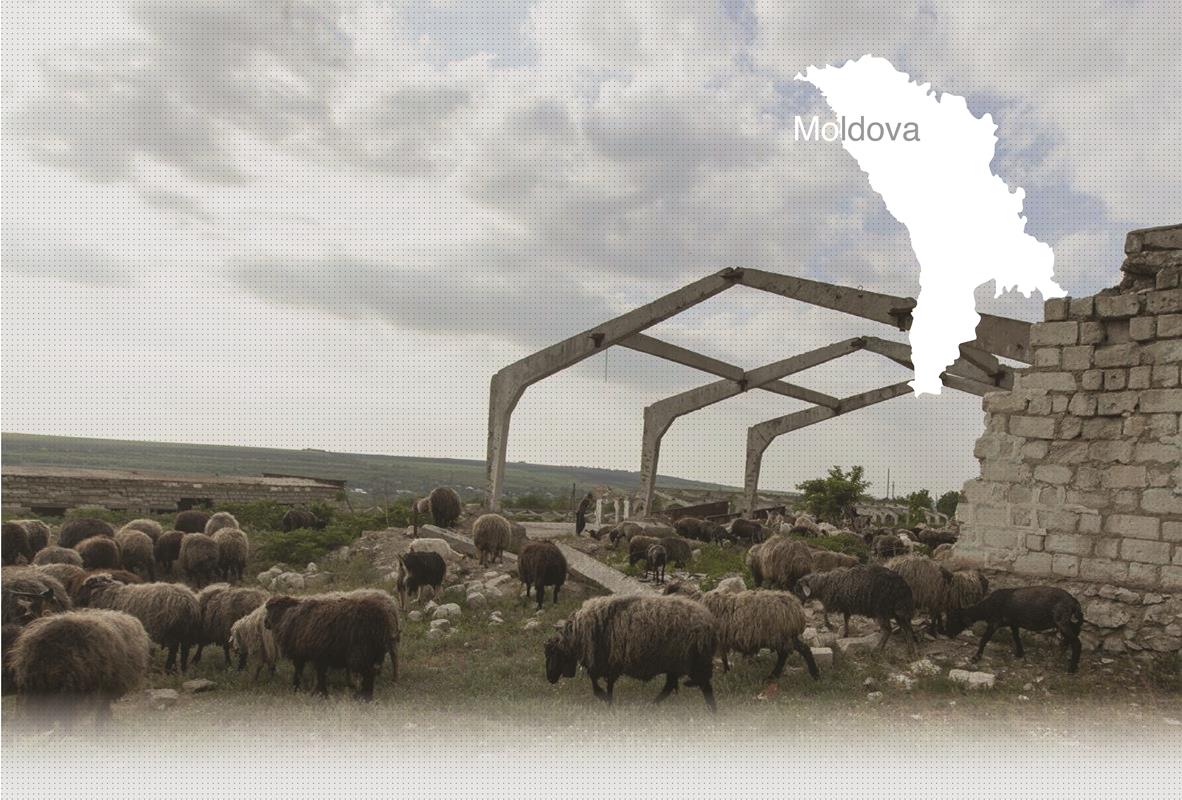

1 Killing site(s)
Ion B., born on 1930: “I saw two columns of Jews being brought by Romanian soldiers through our village. When I saw the first one, I was on my way home from my cousin’s house. Two pits had been dug at the outskirts of the village. The Romanian guards were selecting people from the column, mainly elderly, weak, women and children. They put them aside. They were all shot in groups of ten people in the first mass pit. When the first column passed, about ten minutes later, the second one arrived. Some of the Jews in this column were on carts but the majority was on foot. Another shooting of selected Jews from the column took place in the second mass grave following the same scenario. One pretty Jewish girl from the second column was released by the soldiers. She didn’t want to flee, but eventually she did. She was hiding in a local women’s house for two weeks. Then, she left and I never heard about her again.” (Eyewitness N°76, interviewed in Fîntîna Albă, on May 11, 2013)
“In July 1941, after the entry of German-Romanian troops into our village, the entire Jewish population, namely twenty-three people, was assembled and escorted towards the outskirts of the village. There were elderly people, women and children. I do not know where they were taken or what was done with them. But they never came back. This testimony is true to my words and has been read to me.”
[Deposition of a local resident Zinovy K., born in 1902, made to the Soviet Extraordinary Commission (ChGK) on March 25, 1945; RG.22-002M: GARF: 7021-96-82]
“In October 1941, Romanian soldiers brought a heavily guarded convoy of around six hundred Jews through our village. A group of around eighty to ninety people was separated from the convoy, including the elderly, women and children, and shot in the territory of our commune, at a place called "Valea lui purece." They were shot and buried there. I do not know the names of the soldiers who shot.
I have nothing to add, this testimony is true to my words and has been read to me.” [Deposition of Vasiliy U., made to the Soviet Extraordinary Commission (ChGK); RG.22-002M: GARF: 7021-96-82]
Fîntîna Albă is a small village in northern Moldova, located 174km from Orhei. Before the outbreak of WWII, seven hundred and fifty-six people lived in Fîntîna Albă, including Moldovans, Poles, Russians and Ukrainians. There were also several Jewish families in the village. YIU’s witnesses recall the names of four Jewish families: Sheim, Usaï, Itzek, et Sohar. Local Jews lived in the center of Fîntîna Albă, near the Catholic Church and cemetery. They were merchants and shop owners. Ion B., born in 1930, remembers Mr. Schaï Sohar who was a Jewish merchant in the village. He would go to surrounding towns and villages to buy and sell his merchandise.
According to the Soviet archives, in July 1941, after the German-Romanian troops entered the village, the entire Jewish population of Fîntîna Albă, namely twenty-three people, was assembled and escorted to the outskirts of the village. The archives don’t give any additional information about their fate.
In October 1941, a long column of Jews passed through the village. Some of the local Jews were rounded up in their homes and put in those columns that were guarded by Romanian soldiers with dogs on both sides. The weakest people, including children and the elderly, were selected and shot by the Romanian soldiers at the eastern boundary of the village. The column advanced while the selected Jews were shot and buried in two pits that that had been dug by the premilitaries, on the orders of the station chief, in a place commonly called "Valea lui purece." Once the first mass grave was full of bodies, the shooting continued in the second pit. Both pits were filled in after the execution by the same requisitioned premilitaries. The column continued to advance. Once it passed, the soldiers distributed belongings which they had looted from the Jewish stores to the local population. Further on, there were several similar shootings of those in the column that took place. According to YIU’s witness Ion B., born in 1930, the local Jews who had been forced to join the column were brought to the village of Scăieni located about 20km from Fîntîna Albă, where they were shot.
Nowadays there is a memorial commemorating the shooting of Jews in Fîntîna Albă. However, it was not erected at the exact location of both mass graves which remain unmarked today.
Do you have additional information regarding a village that you would like to share with Yahad ?
Please contact us at contact@yahadinunum.org
or by calling Yahad – In Unum at +33 (0) 1 53 20 13 17